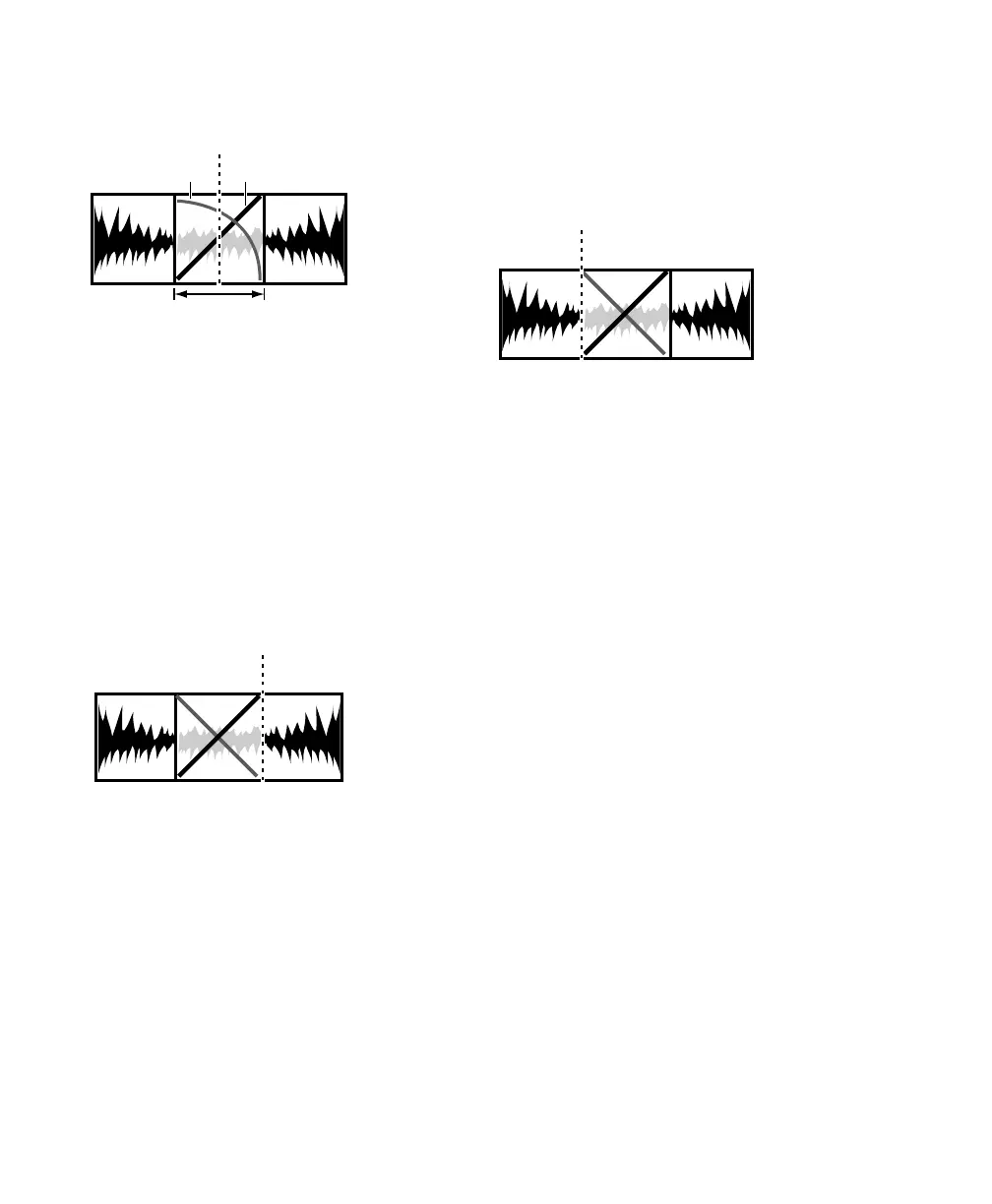Pro Tools Reference Guide466
Standard Crossfade (Centered)
This type of selection creates a crossfade on both
sides of the splice point, which affects the vol-
ume of region 1 and region 2. It is the most
common type of crossfade.
This crossfade type requires that region 1 con-
tain audio material beyond its end point, and
region 2 contain audio material before its start
point.
Pre Crossfade
This type of selection creates a crossfade before
the splice point. This lets you maintain the vol-
ume of the very beginning of region 2 instead of
fading across it, which is useful if there is a
strong attack at the beginning of region 2 that
you want to preserve. When making selections
for crossfades that occur on the border of two re-
gions, you can use the Tab key to move the cur-
sor to the exact beginning or end of a region.
This crossfade type requires that region 2 con-
tain audio material before its start point.
Post Crossfade
This type of selection creates a crossfade after
the splice point. It is useful if you want to main-
tain the amplitude of region 1 until its very end.
When making selections for crossfades that oc-
cur on the border of two regions, you can use
the Tab key to move the cursor to the exact be-
ginning or end of a region.
This crossfade type requires that region 1 con-
tain audio material beyond its end point.
Centered crossfade
Pre crossfade
region 1
fade out
curve
fade in
curve
region 2
splice point
crossfade selection
region 1 region 2
border of region 1 and 2
selection range extends just up to beginning of region 2
Post crossfade
region 1 region 2
border of region 1 and 2
selection range begins just after end of region 1

